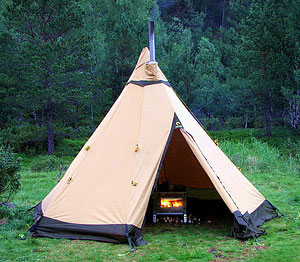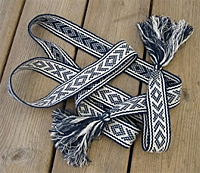Please choose your country or region so we can show you the most relevant content.
It looks like you are in United States? Accept
Africa
- Algeria
- Angola
- Benin
- Botswana
- Burkina Faso
- Burundi
- Cabo Verde
- Cameroon
- Central African Republic
- Chad
- Comoros
- Congo
- Côte d'Ivoire
- Djibouti
- DR Congo
- Equatorial Guinea
- Eritrea
- Eswatini
- Ethiopia
- Gabon
- Gambia
- Ghana
- Guinea
- Guinea-Bissau
- Kenya
- Lesotho
- Liberia
Asia
Australasia
Europe
- Albania
- Andorra
- Austria
- Belarus
- Belgium
- Bosnia and Herzegovina
- Bulgaria
- Croatia
- Czechia
- Denmark
- Estonia
- Finland
- France
- Germany
- Greece
- Greenland
- Holy See
- Hungary
- Iceland
- Ireland
- Italy
- Latvia
- Liechtenstein
- Lithuania
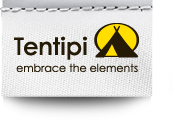





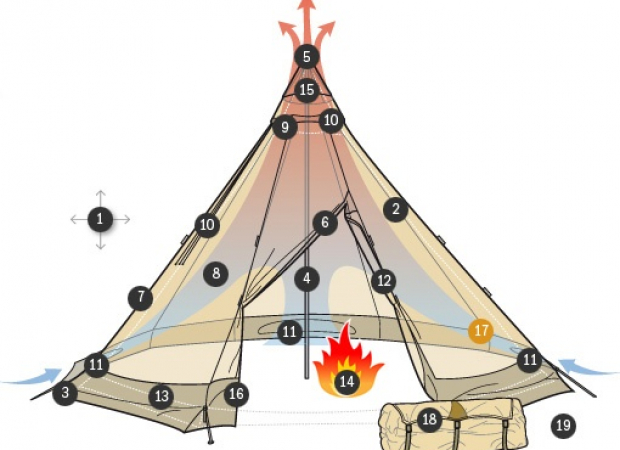
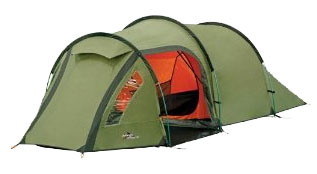 These give good internal volume relative to floor area due to their steep side walls. Many lightweight models are available, some of which are quick to pitch. Small specialist tunnel tents have been used in extreme mountain conditions, but the larger scale designs suffer in strong side winds, and the flatter roof panels can collect snow.
These give good internal volume relative to floor area due to their steep side walls. Many lightweight models are available, some of which are quick to pitch. Small specialist tunnel tents have been used in extreme mountain conditions, but the larger scale designs suffer in strong side winds, and the flatter roof panels can collect snow.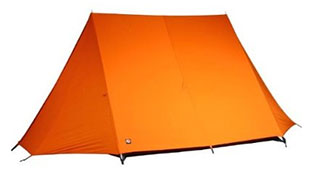 A development of the original canvas “Patrol” tent which uses 2 upright poles. These A-Frame tents have been a popular option for lightweight camping and mountaineering in the UK over many years, but their popularity really took off with the addition of a connecting ridge pole. Generally very stable, even if the side panels did flap and were noisy in strong winds. Popular to this day, although the internal volume relative to floor area suffers due to the sloping side panels.
A development of the original canvas “Patrol” tent which uses 2 upright poles. These A-Frame tents have been a popular option for lightweight camping and mountaineering in the UK over many years, but their popularity really took off with the addition of a connecting ridge pole. Generally very stable, even if the side panels did flap and were noisy in strong winds. Popular to this day, although the internal volume relative to floor area suffers due to the sloping side panels.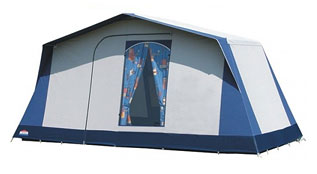
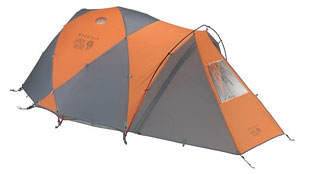 These are based upon the “Geodesic” structure, and are a popular sight across campsites and mountainsides worldwide. The geodesic structure was invented shortly after WWI, but it was left to Buckminster Fuller to develop the complex mathematics describing this, for which he was awarded a US Patent in 1954. This allowed popularisation of the structure, and its eventual adoption as a highly stable tent design. The internal frame models have proven to be the preferred expedition option due to their higher inherent stability. Base camp designs large enough to comfortably stand up within are not really portable structures, being very complex and heavy too.
These are based upon the “Geodesic” structure, and are a popular sight across campsites and mountainsides worldwide. The geodesic structure was invented shortly after WWI, but it was left to Buckminster Fuller to develop the complex mathematics describing this, for which he was awarded a US Patent in 1954. This allowed popularisation of the structure, and its eventual adoption as a highly stable tent design. The internal frame models have proven to be the preferred expedition option due to their higher inherent stability. Base camp designs large enough to comfortably stand up within are not really portable structures, being very complex and heavy too.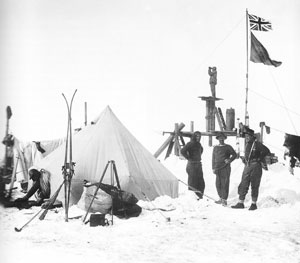 A design which endures – seen here in use during Shackleton’s ill-fated 1914 Polar exploration expedition. The conical design of tent as we mention in our previous Post has been home to semi-nomadic indigenous people for thousands of years. It continues to be used in extreme conditions – the simplified pole system allowing a quick shelter to be pitched – here, a modern design once more at home on Antarctica.
A design which endures – seen here in use during Shackleton’s ill-fated 1914 Polar exploration expedition. The conical design of tent as we mention in our previous Post has been home to semi-nomadic indigenous people for thousands of years. It continues to be used in extreme conditions – the simplified pole system allowing a quick shelter to be pitched – here, a modern design once more at home on Antarctica.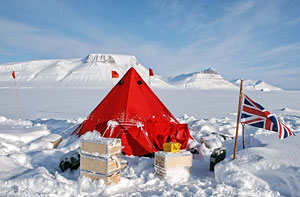 Why these designs work so well is that their cone shape produces a low centre of gravity, with most of the tent area near the ground where wind speed is lowest. Their symmetry keeps the tent stable when wind direction shifts too, and this stability increases with the use of multiple wall panels, as we approach a smooth conical shape. The Tentipi design uses 8 panels – closely resembling the original Sami Nordic Tipi, and one of the most important factors in our success. What Tentipi does with this design is to then combine the portability and stormproofness of today’s lightweight tents with the comfort and homely feel of the traditional Sami dwellings. The comfortable living space is characterised by good head room and a floor area almost circular in shape. Add to this a fire, and what you have is a truly unique concept in modern tents. Tentipi.
Why these designs work so well is that their cone shape produces a low centre of gravity, with most of the tent area near the ground where wind speed is lowest. Their symmetry keeps the tent stable when wind direction shifts too, and this stability increases with the use of multiple wall panels, as we approach a smooth conical shape. The Tentipi design uses 8 panels – closely resembling the original Sami Nordic Tipi, and one of the most important factors in our success. What Tentipi does with this design is to then combine the portability and stormproofness of today’s lightweight tents with the comfort and homely feel of the traditional Sami dwellings. The comfortable living space is characterised by good head room and a floor area almost circular in shape. Add to this a fire, and what you have is a truly unique concept in modern tents. Tentipi.